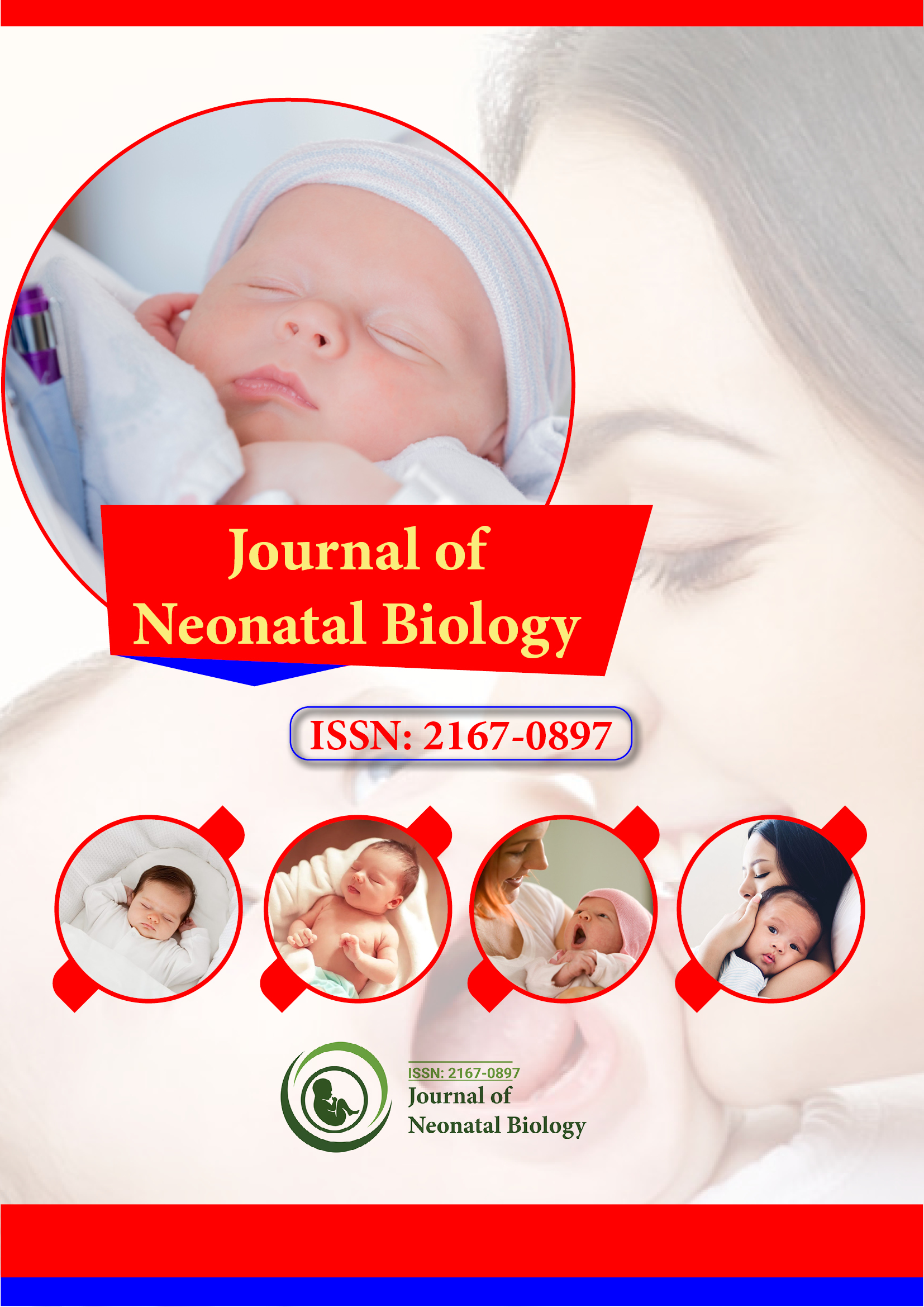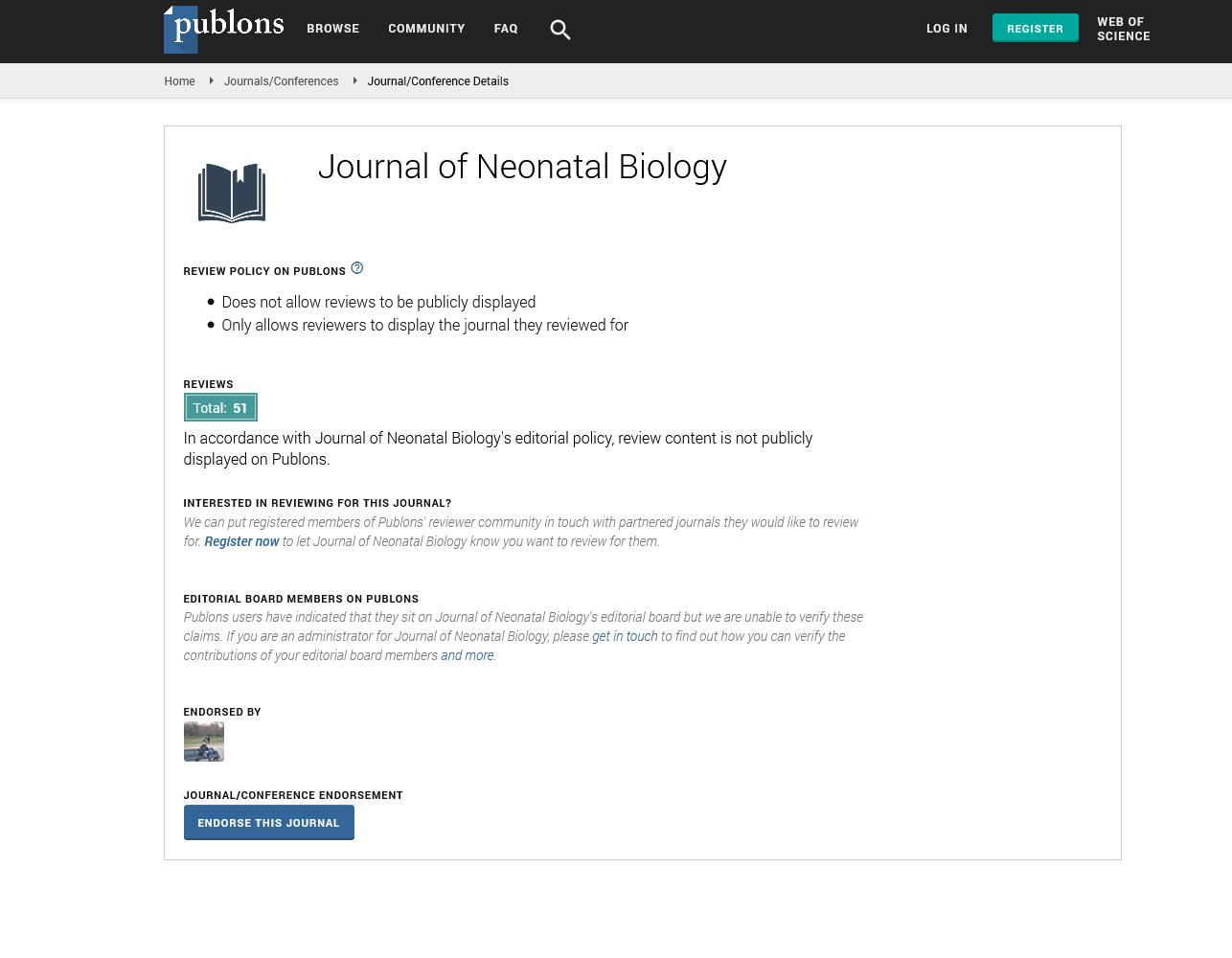PMC/PubMed Indexed Articles
Indexed In
- Genamics JournalSeek
- RefSeek
- Hamdard University
- EBSCO A-Z
- OCLC- WorldCat
- Publons
- Geneva Foundation for Medical Education and Research
- Euro Pub
- Google Scholar
Useful Links
Share This Page
Journal Flyer

Open Access Journals
- Agri and Aquaculture
- Biochemistry
- Bioinformatics & Systems Biology
- Business & Management
- Chemistry
- Clinical Sciences
- Engineering
- Food & Nutrition
- General Science
- Genetics & Molecular Biology
- Immunology & Microbiology
- Medical Sciences
- Neuroscience & Psychology
- Nursing & Health Care
- Pharmaceutical Sciences
MR diagnosis of hypoxemic-ischemic encephalopathy in infants and neonates
20th International Conference on Neonatology and Perinatology
December 04-06, 2017 | Madrid, Spain
Shibani Mehra
Post Graduate Institute of Medical Education And Research, India
Scientific Tracks Abstracts: J Neonatal Biol
Abstract:
A global reduction in cerebral blood flow in infants and neonates results in reduced oxygen and glucose supply to the brain which induces brain damage. This results in hypoxic-ischemic encephalopathy in the affected infants. The cerebral manifestations of HIE depend on the period during which ischemic insult occurs, the duration and severity of ischemia. Therefore in preterm infants the peri ventricular white matter, which happens to be the vascular water shed zone in the developing fetus and is the region of high metabolic demand due to ongoing myelination, is extremely susceptible to ischemic injury. When ischemia occurs in the term infants on the other hand, cortical and sub cortical injury is more common with lesser degree of hypoxia; while severe hypoxias involves the deep gray matter of thalamus and basal ganglia. MR imaging is the best modality available today to evaluate infants and neonates of suspected cerebral ischemic injury. Conventional MRI sequences have an established role in detecting both acute and chronic changes of cerebral ischemia. Of late, diffusion MR has shown high sensitivity in detecting acute ischemic changes in the brain parenchyma. MR imaging diagnoses the extent of damage in the brain, the site of involvement, differentiates between acute and chronic changes in the brain, thereby assisting in prognosticating the clinical course in patients of hypoxic ischemic encephalopathy. I shall be discussing the spectrum of changes of hypoxic ischemia in pediatric neonatal population on MR imaging.
Biography :
Shibani Mehra, currently working as Professor Radio diagnosis PGIMER DR RML Hospital New Delhi ,a central government hospital with state of the art facilities and 102 postgraduate students in all clinical departments. In her current position she have the privilege of being involved in service to the community and the society by providing excellent diagnostic care to the inpatients and OPD patients referred for diagnostic imaging. Apart from diagnostic work she have been actively involved in Post graduate medical education and training since 1997 in this institute , and prior to that at Lady Hardinge Medical College & Smt Sucheta Kripalani Hospital ,during her 3 year 6 month Senior Residency in that institute. She have expertise in Conventional Radiology, Sonography as well as MRI and CT. She have gained a lot during her 22 years as a Radiologist and have amassed good amount of experience and gained in knowledge and professional skills during her working period in these premiere institutes. Apart from this she have administrative capability and have been involved with projects and decisions requiring lot of responsibility. She have a number of publications to my credit and have participated as faculty in a number of national and international conferences.

